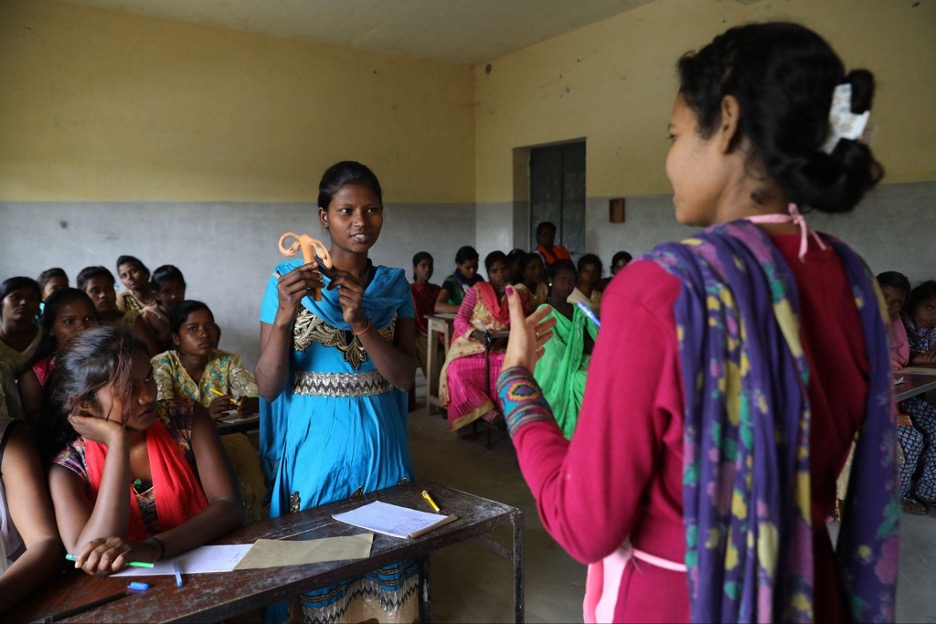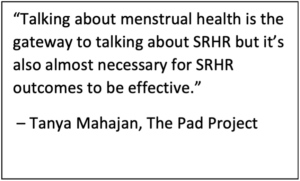Family planning and menstrual health are closely related fields that are often not effectively integrated, which can result in missed opportunities to improve the health, well-being, and dignity of individuals. Integrating family planning and menstrual health could help address challenges of stigma, misinformation, and navigating complex social and gender norms and increase the reach and impact of both fields. Recent work has brought together experts from the two fields. In breaking down silos, a growing interest in this topic of integration has emerged and experts agree that greater efforts should be made to proactively link family planning and menstrual health policies and programs including through provider training and capacity strengthening, community and school-based education and outreach, service provision, and program evaluation.
This event aimed to highlight the linkages between these two fields and offer practical guidance for integration. The webinar was moderated by Irene Alenga of Knowledge SUCCESS. It began with a discussion between Tanya Mahajan, menstrual health expert and Director at the Pad Project, and Dr. Marsden Solomon, an independent consultant and family planning expert, which highlighted the connections between the fields of family planning and menstrual health. Emily Hoppes of FHI 360 then took participants through recently published programmatic guidelines for family planning-menstrual health integration. All three presenters participated in a question-and-answer session and the event concluded with a group brainstorming activity.





 The panelists were then asked to reflect on how their respective fields could learn from one another and benefit from integration. Dr. Solomon mentioned two key areas where the fields overlap during family planning practice: 1) when couples are being counseled through the use of fertility-based awareness methods, like the Standard Days Method, they are provided with education about how the menstrual cycle works and is related to fertility, and 2) in discussing contraceptive side-effects, clients should be educated about contraceptive-induced menstrual changes with a job aid like the
The panelists were then asked to reflect on how their respective fields could learn from one another and benefit from integration. Dr. Solomon mentioned two key areas where the fields overlap during family planning practice: 1) when couples are being counseled through the use of fertility-based awareness methods, like the Standard Days Method, they are provided with education about how the menstrual cycle works and is related to fertility, and 2) in discussing contraceptive side-effects, clients should be educated about contraceptive-induced menstrual changes with a job aid like the  Tanya then reflected on how the field of menstrual health can learn from the field of family planning when it comes to offering full, free, and informed choice.
Tanya then reflected on how the field of menstrual health can learn from the field of family planning when it comes to offering full, free, and informed choice.



